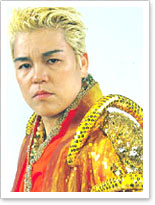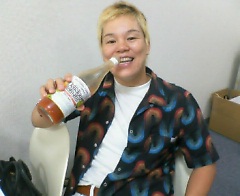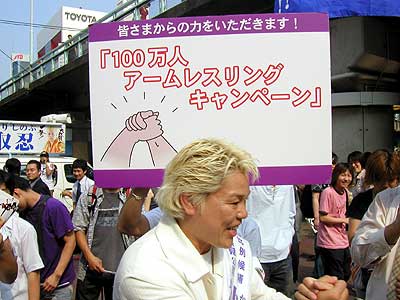Marxy made a good comment on my last post:
Anyone weirded out that Japan’s opposition party is all ex-LDP members who are out of the majority? I am sure the official policies are different, but seems more like a reorganization of sports teams than ideological conflict.
Sure it looks like a rearranging of chairs since most of the party’s leaders herald from the former Tanaka faction of the LDP. But actualyl the DPJ is made up of more diverse groups since politics in Japan continues to be dominated by building up relations with interest groups (outright bribing of voters is pretty well nipped in the bud as of now). But I think that the current election climate and the media/public’s expectations are forcing the parties to compete for public support.
Party President Ichiro Ozawa, Supreme Adviser and ex-PM Tsutomu Hata, Diet Affairs Chairman Kozo Watanabe, Secretary General Yukio Hatoyama, and former president Katsuya Okada all hailed from ex-Tanaka/Takeshita faction, rebelled against LDP after PM Shin Kanemaru was arrested for receiving 500 million yen from Sagawa Kyubin, whose credit was abused by the yakuza to take out loans, went in a million directions forming new parties (mainly conservative Shinshinto and liberal Shinto Sakigake) before most of the small breakaway parties combined into the DPJ.
But it’s not *all* ex-Tanaka faction!
Seiji Maehara – Joined Nihon Shinto (a “progressive party” started separately from the LDP by Morihiro Hosokawa, a former Tanaka faction upper house member)
Naoto Kan – formerly of minor left-wing party Socialist Democratic Federation, joined Shinto Sakigake (a 1993 breakaway of the LDP led by younger liberal minded Diet members such as Hatoyama) before winding up in DPJ.
And then there are the intra-DPJ factions. While factions supporting former LDP members are most powerful, there is also a good number of factions based on former membership in leftist parties.
The mix makes for a center-left ex-LDP led but still somewhat divided party that can result in some watered down policy positions such as their weak response to the postal privatization issue (DPJ was hemmed in by ties to labor unions) and constitutional revision (large range of opinion within the party).
So, a political party that’s run by a conservative and divided internally along factional lines? Sounds a lot like the LDP right? But what you have to consider is that the DPJ was formed in the aftermath of the 1955 system. Accordingly, the politicians involved inherited themselves (career, politicians with stable and often inherited support bases), blocks of interest groups (labor unions, professional associations, religious groups, etc), and the social/economic state that the 1955 system left Japan in.
After confidence in the LDP crumbled in 1993 and a non-LDP cabinet came in, the election rules were changed to make it possible for an opposition party to take over and also for elections to be won on a combination of interest groups getting out the vote AND campaigning on the issues as opposed to interest groups alone. The idea (credited to Ozawa no less) was to allow for a two-party system since people weren’t going along with the one party state, presumably. The spectacular stumbling of the 8-party opposition coalition led to the resurgence of LDP coalition governments, however, and put the 2 party vision on hold until the DPJ rose in status.
The hodgepodge makeup of both parties reflects the conflicting election strategies they need to take. The horsetrading that brings in wildly different politicians under the same fold is necessary to build a large number of entrenched supporters. But at the same time the party needs to pull in the unaffiliated voters with strong policy proposals. Right now I think both parties are better at the former than the latter.
The media of course like the idea of two clearly denominated sides fighting for the right to govern. And as a result the editorial tone when talking about the DPJ tends to focus on the question “what does the DPJ have to do to win?” rather than “does the DPJ deserve to win?”
So slowly both the LDP and opposition have had to find ways to deal with the growth in public interest in the election process that the rule change brought about. In 2003 or so it was Manifestos that helped the DPJ, and in 2005 it was Koizumi’s sophisticated PR techniques that wooed voters. The DPJ is going all out to make itself look smarter and better able to govern than the LDP this July and I believe that is what the election will turn on.



